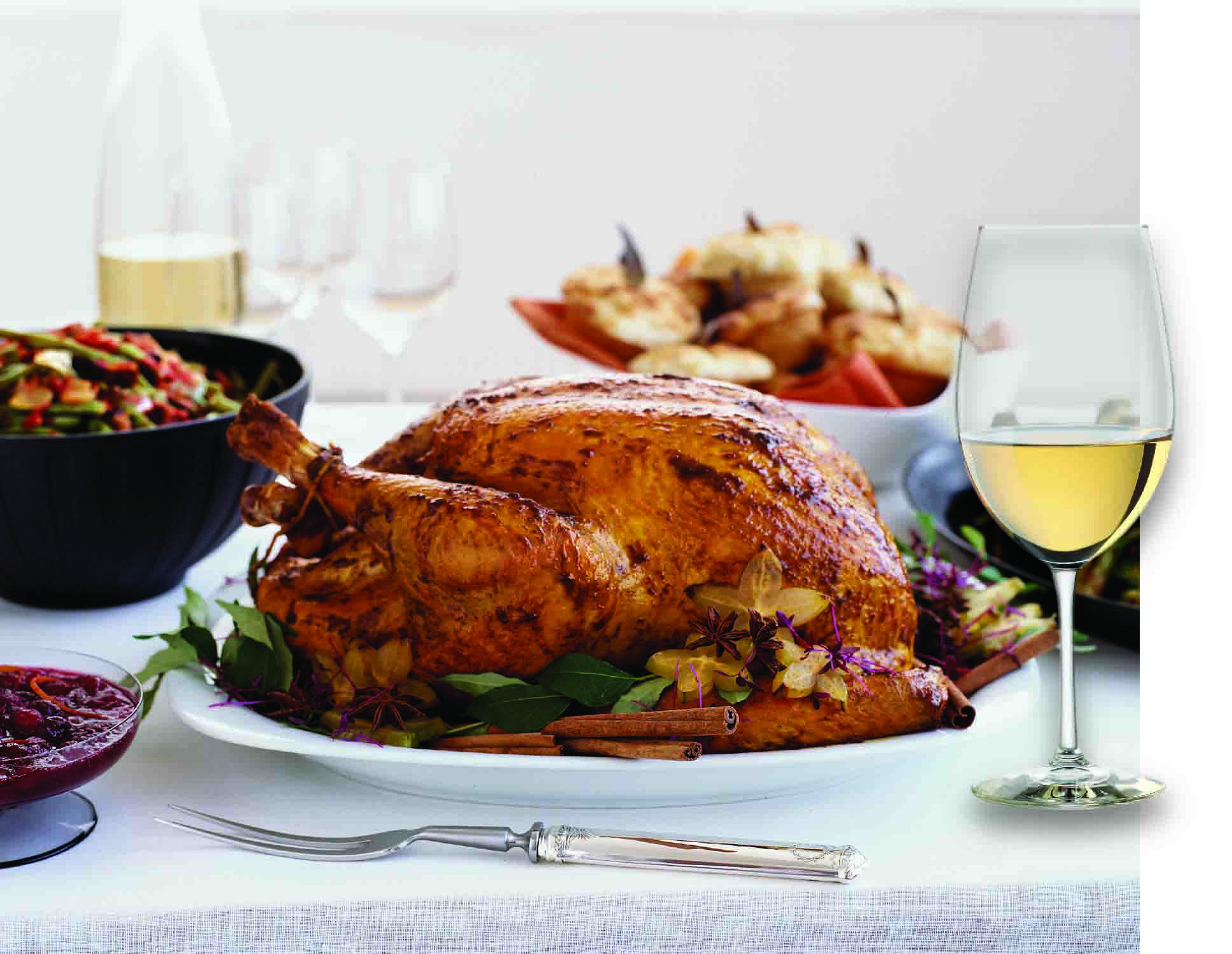
04 Oct THANKSGIVING DINNER WINE-ING Pair the Right Wine with Your Thanksgiving Dinner BY KARLA PONDER
Fall is here, full-blown, with the beautiful colors we look forward to seeing each year. I remember one crisp Fall day when I accompanied my father to a wine store. He grew up in France and was very astute about the different wines, the grapes they are made from, and the “terroire” where they are grown. I asked him how he knew so much about wines, tastes, and pairings (what foods are enhanced by which wines and visa versa). He stated that in France children are given watered down sips of different wines from time to time and taught about them. He said that tasting wine to him was like tasting sodas to me.
“For Thanksgiving,” he said, “we will have a white wine with dinner since white wine is served with poultry and fish.”
Thus my education in wines began. A few things to know about the wine your turkey will be happiest with are stereoisomers, temperature, and personal taste.
A wine pairing is simply which wines go best with which foods. Generally, lighter foods pair best with a white wine that will not overpower the food. A bold red, on the other hand, can stand up to a steak or other red meat.
Oenophiles describe wines with certain undertones. You can use these descriptions when making the decision of what wines to purchase. They describe Chardonnay as having the characteristics of “citrus, melon, pineapple, vanilla.”
Only Chardonnay grapes grown in the Chablis region of Burgundy in Northern France can be used to produce Chablis wine. Chablis has a somewhat fruitlike, clean, high acid profile. These fruits and flavors are not actually in the wine, but are a combination of chemicals in the finished wine, called “stereoisomers,” that are recognized by our sense of smell as being the fruits and flavors themselves.
A Sauvignon Blanc is said to be, “herbal, green, sour apple with an acidic finish.” Pinot Grigio is “aromatic, fruity, pear, citrus.” Riesling has a “slightly sweet apple taste,” which I prefer not to eat with a poultry dinner. I would also stay away from sweeter whites such as Asti-Spumanti or Muscat that are better served alone or as dessert wines.
Your white wine for Thanksgiving dinner should be served chilled. The reason your white wine glass has a stem is to keep your hands from warming the glass. The proper way to hold white wine is by the stem, not the bowl of the glass, and not between the middle and ring fingers as you would a brandy. Brandy in a snifter is meant to be warmed by your hand (thus the stubby stem), while white wine is meant to be kept cold.
You may have seen a table setting where there are two wine glasses. The larger rimmed glass is for the red wine so the person drinking can inhale the aromas. You can hold the glass by the bowl since the heat of your hand will not impair the enjoyment of the red, but most use the stem. The white wine glass will have a smaller rim to help it from losing its chill.
One last word on wines. The best wine to buy is the one you like. Speak to a wine merchant who knows wines. I have visited with some at Prosper’s Kroger and McKinney’s Market Street stores and have found them to be very knowledgeable and able to lead one to the right wine for his/her tastes. Wine is like art or music: the more you know about it, the more you will enjoy the flavors, bouquet, colorations, and the way they can enhance your dining experience. Sip slowly with your attention to the subtleties of the wine for peak enjoyment.
Enjoy your Thanksgiving dinner with family and friends and raise a glass of wine to toast all that we have to be thankful for this year. Have a blessed Thanksgiving Holiday!


